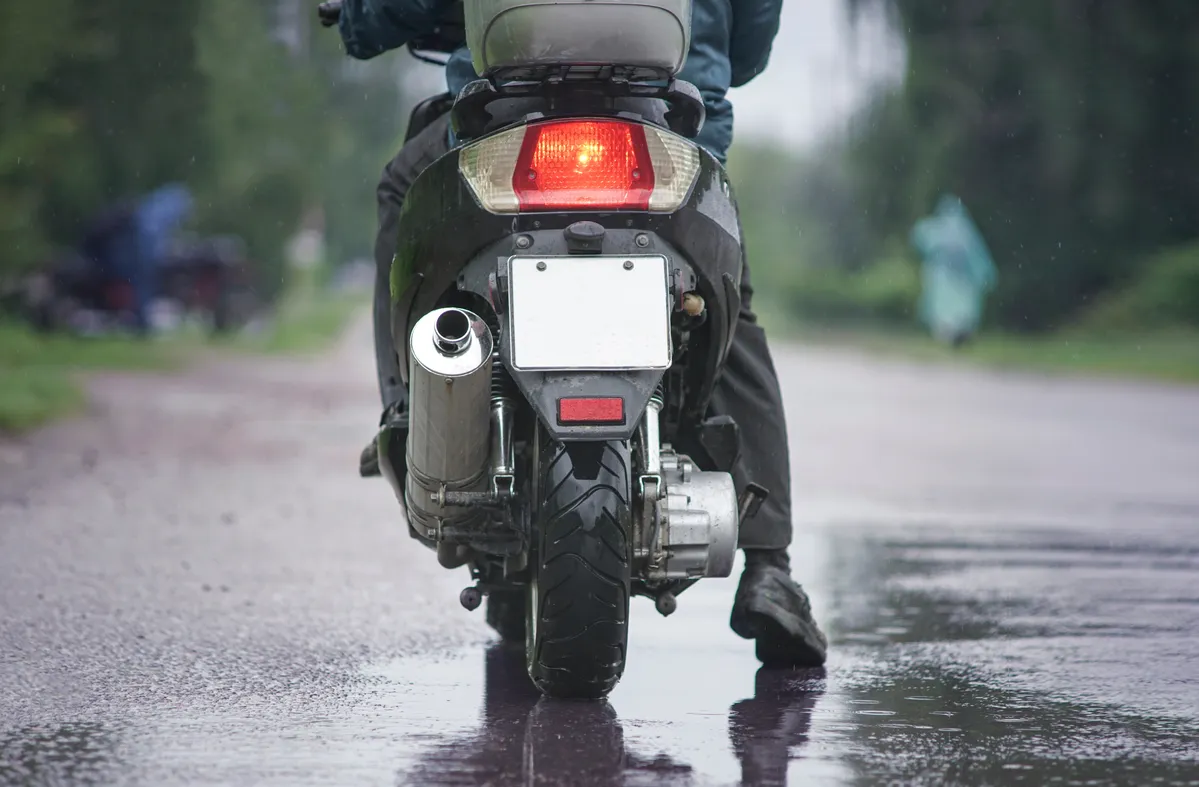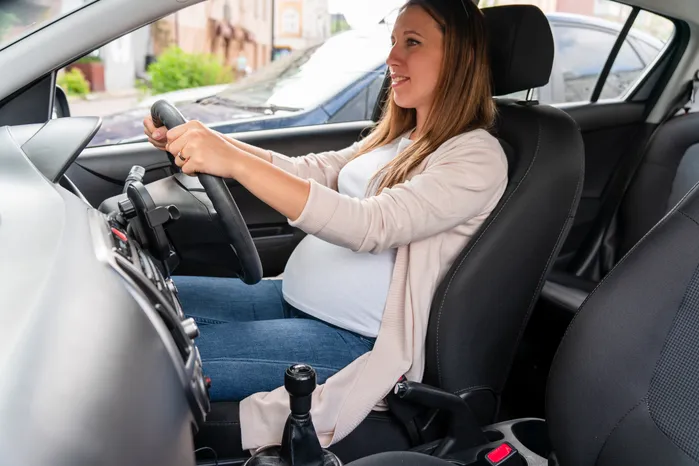4 min read time
Table of Contents

What Is Considered a Moped According to Nevada Law
According to Nevada Revised Statutes (NRS) 482.069, a moped in Nevada is a motor vehicle that:
- Has two or three wheels
- Installed with a small engine that does not exceed 2 horsepower
- Has a displacement of no more than 50 cubic centimeters
- Maximum speed of 30 miles per hour on a flat surface
- Does not require manual shifting once it's in motion
It's vital that moped riders understand the laws that define a moped in Nevada, as laws differ between mopeds and other motor vehicles.
How Old Do You Have to Be to Ride a Moped in Nevada
According to teen driving laws, the minimum age to be legally permitted to operate a moped on public streets is 15 ½ years old.
Do You Need a Driver’s License to Operate a Moped in Nevada
Nevada moped laws require a valid driver's license to operate a moped on a public street.
However, unlike motorcycle riders, moped riders do not need a special license, such as a Class M motorcycle license.
Nevada Moped Insurance Requirements
Unlike other vehicle operators, Nevada moped laws don't require a moped operator to carry liability insurance.
However, even though moped law does not mandate insurance, it's still recommended that riders have the minimum insurance requirements to protect themselves from potential damages, theft, or medical costs resulting from a moped accident.
Nevada Moped Equipment Requirements
In Nevada, mopeds must meet specific equipment and safety equipment requirements outlined in NRS 486.180 - 486.311 to be operated on Nevada roadways.
Mopeds in NV must be equipped with the following:
- Headlight: Mopeds must have at least one working headlight that can illuminate the road for 500 feet.
- Taillight: A red taillight visible from at least 500 feet is required.
- Brake Lights: A moped must be equipped with functioning brake lights that properly signal braking to other vehicles on the road.
- Mirrors: One rearview mirror that allows the driver to see traffic behind them must be installed.
- Brakes: Operational brakes are required.
- Horn: A functioning horn that can be heard from up to 200 feet is required.
- Reflectors: A moped must have standard reflectors to ensure visibility at night or in low-light conditions.
- Helmet: Moped operators must wear a helmet that meets the helmet safety standards.
- Protective Eyewear: If the moped lacks a windshield, protective eyewear such as glasses, goggles, or a face shield is required.
- Turn Signals (Not Mandated By Law): While indicators are not required by law, it's highly recommended that any moped driver install them for safety reasons.
These requirements are not only the law but are also meant to protect you against dangers such as a moped accident.
Where Can You Ride a Moped in Nevada

Although mopeds can be ridden on most public roads, there are certain restrictions on where a moped driver can go.
Public Roads
A moped can be ridden on public Nevada roads and take up a single lane, but the moped driver must still abide by the same traffic laws as other motor vehicles.
In addition, mopeds should remain in the right-hand lane unless making a left turn.
Prohibited on Highways
Mopeds cannot go on public highways due to their low speed, which typically maxes out at 30 mph.
Prohibition on Sidewalks and Bike Lanes
A moped cannot be driven on bicycle lanes or sidewalks as it may be considered recklessdue to the fact that it violates the safety and space of pedestrians and bicyclists.
Nevada Moped Registration and Inspection Laws
Registration
In Nevada, moped registration must be completed with the DMV office before being allowed on the roads.
The steps in completing a moped registration are as follows:
- Proof of Ownership: You must provide proof that you own the moped; this could be a bill of sale or title.
- VIN Verification: The moped Vehicle Identification Number must be verified with the DMV or law enforcement.
- One-Time Fee: Moped owners must pay a one-time registration and license plate fee.
Registering a moped is a one-time thing and will remain so as long as the owner retains the vehicle.
Inspection
A moped inspection ensures that a vehicle meets the definition of a moped. To obtain an inspection, you'll need to fill out the Moped Registration Application/Inspection (VP 30) form and bring your vehicle to the DMV office.
Injured? Talk with a Las Vegas Personal Injury Lawyer Today
If you or someone you know was injured in a Las Vegas moped crash, contact an experienced personal injury lawyer at The Rodney Okano Car Accident Lawyer Law Firm.
With over 20+ years of experience, Personal Injury Lawyer Rodney Okano ensures that he and his team will get the compensation you're entitled to.
File a Las Vegas moped auto accident claim today by calling (702) 566-3600 for a free consultation.
Obtain the Compensation You're Entitled To
Contact Us Today
Rodney Okano Car Accident Lawyer is a Las Vegas personal injury law firm with over 20 years of experience helping clients obtain maximum compensation following injuries from accidents such as car crashes, worksite injuries, and slips and falls. Over those years, The Rodney Okano Car Accident Lawyer Law Firm has become an experienced law firm that can ensure exceptional results for any of its clients.





